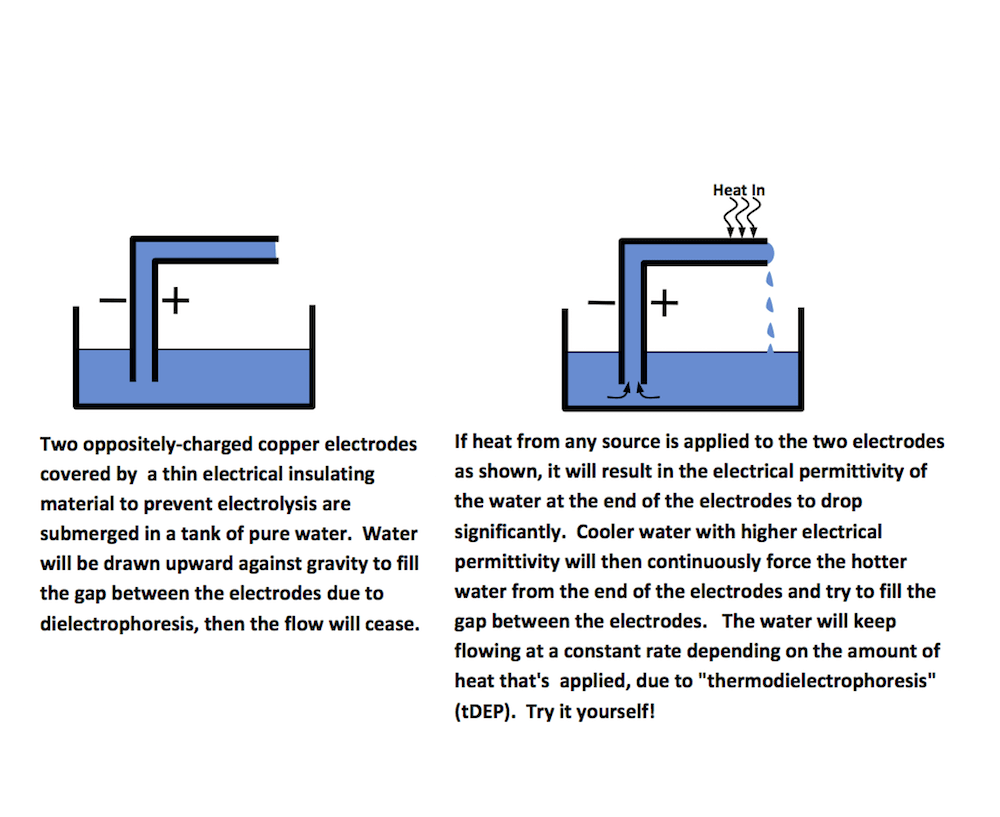I discovered and then defined "thermodielectrophoresis" (or tDEP) in the specification of my US Patent 7,486,000 as being the constant flow or movement of a dielectric medium through a non-uniform electric field that's caused by an increase or decrease in the electrical permittivity of the dielectric medium due to the proper application of thermal energy from any source.
In the drawing, note that once the electrodes are energized to opposite electric potentials (voltage), there is no current drawn from a power supply. It's similar to a charged capacitor that doesn't lose its charge. That implies the flow of water is dependent only upon the amount of thermal energy applied. Thus, the "thermodielectrophoretic heat pump" has no moving parts and it gets extremely powerful and efficient at very small physical scales. For that matter, the power density of a pump of this nature made at the nanometer scale would be 50 million times greater than the power density of your local steam power-generating station! It's important to also note that the water in the experiment never boils or produces water vapor due to the heat applied, which proves it's the thermodielectrophoretic forces alone doing the work to move the water!
Some applications are in micro-immunoassays, heat pipes, micro heat engines, micro refrigerators, and lab-on-a-chip MEMs devices.
Like this entry?
-
About the Entrant
- Name:Jim Hacsi
- Type of entry:individual
- Software used for this entry:Microsoft Word
- Patent status:patented

